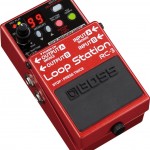
There’s a piece of ‘common wisdom’ that is preventing many guitar players from understanding and using music theory. It’s embedded in how millions of guitar players approach their instrument and is responsible for the poor reputation that guitar players have when it comes to understanding theory.
It’s the idea that the piano is the best instrument to learn music theory on. I can’t tell you how many times I’ve seen people on guitar forums ask how they should go about learning theory, and the inevitable answer that they should sit in front of a piano or keyboard with a piece of sheet music.
The problem is that most musicians have been indoctrinated into the piano paradigm
Did Stevie Ray Vaughan and Jimi Hendrix sit in front of a piano to improve their guitar playing?
No.
I’m not saying you shouldn’t play other instruments like the piano or learn to read standard music notation. It’s all part of becoming a well rounded musician.
But if you want to use music theory in your guitar playing here and now. For example to solo along to a Joe Bonamassa track or have a jam with your friends in the garage then you don’t need to subject yourself to that outdated way of thinking.
The problem is that most musicians have been indoctrinated into the piano paradigm that makes them believe that it is the one true instrument that holds the key to all musical understanding.
And that’s just not true. Our current understanding of how music works and the words and concepts we use to describe them have evolved over thousands of years from the time of Pythagoras, through the Middle Ages and the Renaissance into the modern day.
The piano was invented a couple of hundred years ago when the Western music tradition settled on 12 tone equal temperament. Yes, before that many different tuning systems existed (and still exist) and the piano was built to reflect those conventions.
Now these conventions were in some cases practical (you can now make instruments that can play across different keys) and in other cases just legacy rules that were only preserved to ensure backwards compatibility.
The guitar is played in two dimension with chords across strings, not a linear like the piano.
I mean the reason we have sharp and flat notes is because for a long time people made music with just 7 notes at a time and later they added in an extra 5. So rather than renaming every note they just stuck the new ones in between and called them sharps and flats. I’m simplifying things here but you get the general idea that some of these ideas are a total mess.
Meanwhile guitar players are told they have to treat their instrument like it has six rows of keys. How is that helpful? The guitar is played in two dimension with chords across strings, not in one dimension like the piano.
Here’s the crazy thing. I believe the guitar is the better instrument for learning music theory. A case can be made for the piano as being better for reading music notation but we all know you can learn to speak without learning to read or write. Not that that I’m saying you shouldn’t learn to read music, you should.
But if you want to learn music theory for playing guitar, then learn on the guitar.
Don’t believe me?
Here’s a quick example. On the guitar you can literally see the cycle of 4ths and 5ths spiral along the fretboard. That’s how the strings are tuned!
Notice how I called it the cycle of 4ths and 5ths and not the circle? That’s because it’s a cycle or spiral, and you only really notice that on the guitar. People in the piano paradigm don’t have that instant visual aid available to them.
This kind of instant insight is the kind of thing that comes in handy when you want to improvise in a jam situation, learn songs by ear or come up with your own arrangements.
There are many more ways in which you can use the inherent properties of the guitar to understand and use music theory. Check out the lessons on this site and you’ll find a roadmap that will show you exactly how. For a set of free lessons make sure to sign up to the free newsletter as well.




